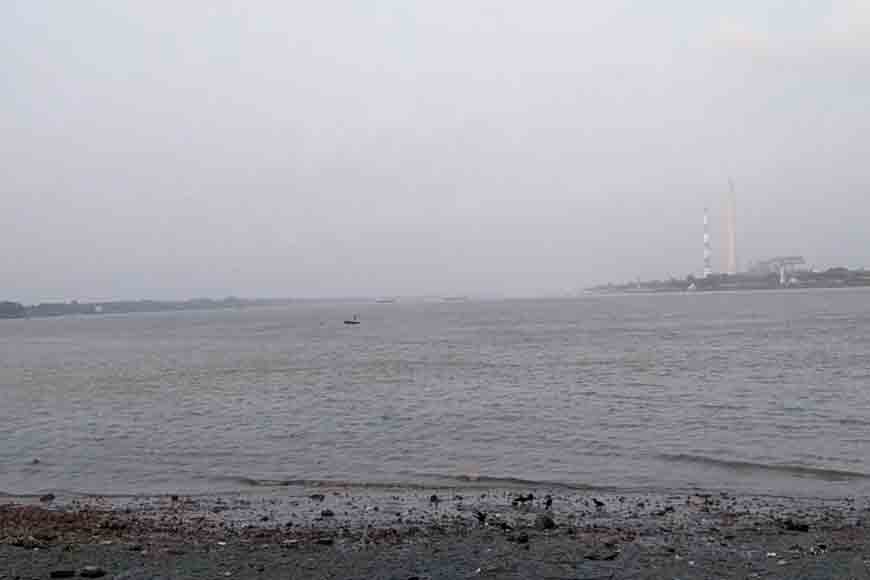What was Job Charnock doing in Uluberia?


Of the many places around Kolkata often visited as a picnic spot, Uluberia merits a special mention. Come winter and the riverside at Fuleshwar becomes abuzz and vibrant with picnic goers and revelers. Bounded by river Bhagirathi in the east, separating it from Kolkata and Damodar in the west and south, Uluberia is virtually an ideal spot for a picnic or a sojourn at Garchumuk(12 km from Uluberia town) or at Gadiara. Uluberia is a municipality in Howrah district of West Bengal. It encompasses a large area taking within its fold Fuleshwar, Chengail, Bauria, Birshibpur and Kulgachia. It is also a part of greater Kolkata as the area falls under Kolkata Metropolitan Development Authority.
At present, Uluberia is a busy place bustling with multifarious activities easily accessible by bus or train. Centuries back the entire stretch of Uluberia was nothing but a vast expanse of forest filled with ‘Ulu’ grass from which the place inherits its present name. Flanked by rivers this grassland was sparsely populated by the native community. According to folklore the deserted slumberous place was brought to life by the twin brother and sister Abbasuddin and Roshanara who sailed down from Arabia and landed here to preach Islamism in early 15th century. History bears testimony to the fact that Job Charnock, widely acclaimed as the founder of Kolkata landed here on the banks of river Hooghly in April 1686 and settled down to carry on trade via waterway.

But he had to face adverse situations and severe crisis arose as restrictions on trade had been imposed by way of customs duty by the Nawab. The British resisted it on the ground that it was in defiance of the dictates laid down in the original firman. This resulted in a conflict with the Moghuls and winding up his trade in Uluberia, he sailed down the river to Sutanati on the other side.It is also observed that the Moghuls had allowed the British a tract of land to settle down and build docks in Uluberia. Charnock left the place finding it vulnerable to attacks and acts of extortion perpetuated by the Moghuls. Moreover, the place was prone to silting and so proved to be unsuitable for a fortified settlement. Mosquito borne diseases on this alien land added to the woes of Job Charnock and his men. Interestingly, a plot of land by the river Bhagirathi near Uluberia Kalibari has been identified as Job Charnock’s settlement and efforts are on to assign it the status of historical importance.
The above fact has been contended by an eminent historian, who observes that Job Charnock did not land in Sutanati on 24th August 1690 for the first time. He actually did so on 20th December, 1686. After three months he moved to Uluberia where he spent about another three months. He returned to Sutanati in September 1687 approximately. Whatever may be the observations and conflicting claims within the bounds of history, Charnock’s link with Uluberia has been established unanimously. The possibility of Uluberia hogging the historical limelight as British headquarters of trade was frustrated with Job Charnock shifting his base to Sutanati.

The educational and cultural scenario of Uluberia in the past was not very encouraging. The population here was predominantly an agricultural and fishing community striving to make both ends meet. The place started evolving with the establishment of Uluberia High School in 1879. Early signs of urbanization dawned once the Bengal Nagpur Railway was started in 1905. In 1948, Uluberia College was founded by the eminent educationist Sri Haripada Ghosal and the B.Ed Department of this college can boast of being the pioneer institution for teacher’s training in Howrah district. Today, there are private engineering colleges, nursing training school, and many other private educational institutions in addition to the state affiliated ones. Among cottage industries, Uluberia has been the hub of shuttle cork production (which unfortunately is facing a setback due to the onslaught of globalization), pottery, painted earthenware and last but not the least zari embroidery on fabrics. With the industrial boom, Uluberia also had its share of industries though much more could be done in this avenue.
So when you go to Uluberia for a picnic and amble by the banks of the river, revel in the thought that you might be treading the long effaced footmarks on the marshy land left by Job Charnock battling to make this place his abode and the Eastern citadel of British empire.









